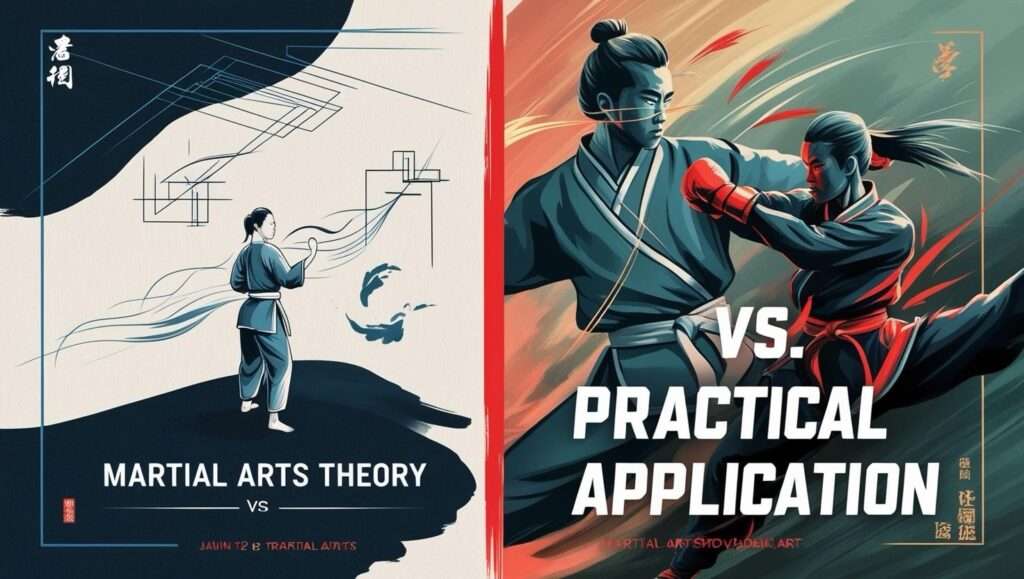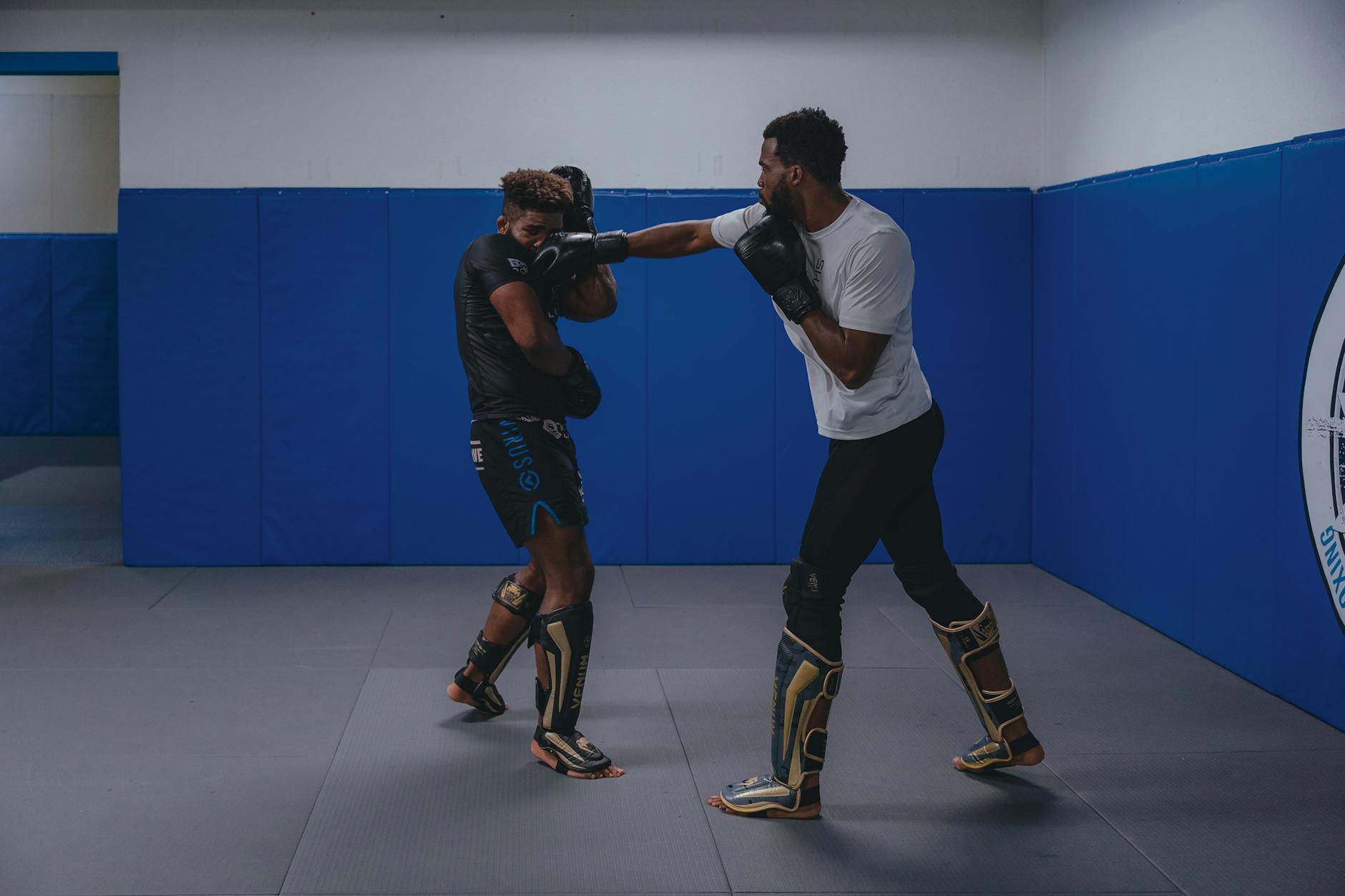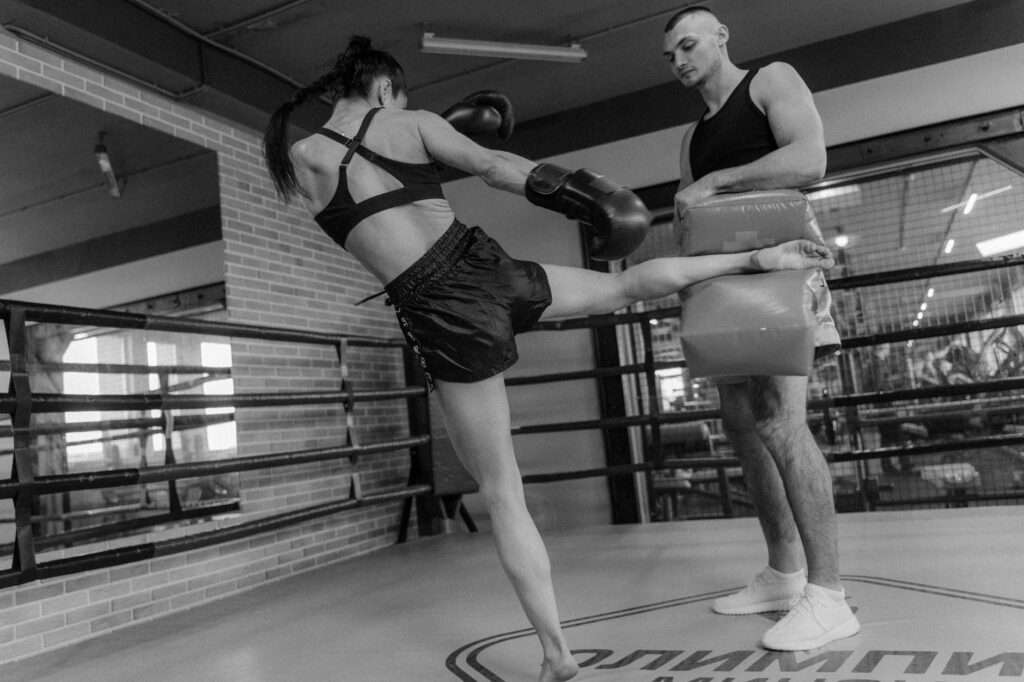Martial Arts Theory vs Practical Application
Theory can give martial artists a strong foundation, but skill truly grows when ideas are put to the test. Learning forms, techniques, and principles in class sets the stage. Yet it’s only through real practice sparring, drills and adapting in the moment that those lessons become useful. Both the study and the doing teach us resilience and highlight areas for improvement. Progress comes not only from understanding concepts, but also from facing setbacks, overcoming obstacles, and celebrating each hard-earned step forward.
The Role of Theory in Martial Arts

Martial arts isn’t just about physical action. Behind every punch and block, there’s a world of thought shaping what happens in the ring or on the mat. Theory gives meaning to technique and pushes us to grow in our training. By understanding the principles, strategies, and philosophy at the core, students can make sense of what works and why. Let’s look at what martial arts theory covers, why it matters, and where it may fall short if not backed up with action.
What Martial Arts Theory Includes
Theory in martial arts is the inside game. It covers:
- Principles: Core ideas like balance, timing, and distance. These guide every movement.
- Strategy: The thinking behind when to strike or defend. Knowing how and when gives martial artists an edge.
- Philosophy: The beliefs and values in martial arts—discipline, respect and the pursuit of self-improvement.
These elements aren’t just abstract concepts. For example, many systems teach about yielding or redirecting energy, not just meeting force with force. Principles and philosophies often stay the same, no matter the style and form the backbone for every technique learned in class. Explore more about the foundations of discipline and respect within different martial arts in this article on the philosophy behind martial arts.
Benefits of Studying Theory
Martial arts theory does more than fill the head with ideas. Its real power lies in shaping how we act, build habits, and grow as people. Key benefits include:
- Mental Discipline: Repeating and reflecting on theory trains focus and patience.
- Clear Understanding: Knowing the ‘why’ behind a move helps students stick with lessons and break down techniques.
- Confidence: When you understand principles, you’re more prepared to handle surprises in practice or self-defence.
- Problem-Solving: Martial artists learn how to analyse opponents, read situations, and stay calm under stress.
Research also shows positive links between martial arts theory and mental health, such as reducing anxiety and depression and building confidence through structured growth.
Limitations of Theory Without Practice
Theory alone does not make a martial artist. You can read every book, memorise every rule, and still struggle when action begins. Here’s why theory-only approaches have limits:
- Lack of Real Experience: Knowing a move isn’t enough; you need to feel the timing and pressure in your body.
- Frozen by Overthinking: Too much focus on perfect form or philosophy can slow reaction and decision making in real world situations.
- Gaps in Adaptation: Theory may not prepare you for unpredictable moments or a resisting partner.
- Missed Physical Benefits: Practice develops strength, coordination, and reflexes—things you can’t learn from a manual.
Strong martial arts training always combines theory with active learning. The best instructors link principles with drills, so ideas are tested and improved. Those who only study theory risk missing out on the true depth and power of martial arts.

Photo by Duren Williams
Practical Application: Learning by Doing
Drills, sparring, and live scenarios are the beating heart of martial arts training. When students leave the safety of theory and step onto the mat, every lesson takes on new meaning. Physical practice builds muscle memory and sharpens reflexes. It turns knowledge into instinct. But the real magic is in applying techniques under pressure—adjusting to what’s actually happening, not what you hope happens. The journey is exciting, but it’s also full of challenges and setbacks. This section shows what practical application looks like and how students meet the highs and lows of real practice head-on.
Early Progress and the Motivation Cycle: Rapid Gains and Hitting Plateaus
The first weeks or months of hands-on practice bring a rush of progress. New students often see fast improvements—they pick up basic strikes, start to remember combinations and feel real changes in balance and timing. Every drill and sparring session fires up motivation. This early boost isn’t just in your head; your body actually builds new neural pathways, laying the groundwork for lasting skills.
But, just as quickly as progress appears, reality sets in. Plateaus hit. Suddenly, gains become less obvious. Routines feel repetitive. This dip in visible improvement can drain motivation. It’s perfectly normal. Almost every martial artist faces this cycle:
- Initial Boost: Rapid gains create excitement and energy.
- Plateau: Progress slows, frustration rises, and commitment is tested.
- Renewal: With consistent effort and smart changes, breakthroughs return.
The key is persistence. Real skill comes from continual practice and adaptation. Switching up training routines, using new drills, or seeking feedback from instructors can refresh learning. For more about how practical application shapes real-world abilities, see this guide on martial arts practice and application of skills.

Photo by MART PRODUCTION
The process is like running a science experiment. You try, fail, adjust, and try again. Over time, trial and error builds not just skill, but deeper strategic thinking. The outcome isn’t just better technique—it’s stronger confidence under pressure.
Setbacks and Slumps: Overcoming Burnout in Practice
Almost every martial artist stumbles into periods of burnout or stagnation, no matter how passionate they are about training. Recognising the causes is the first step to finding solutions.
Common Reasons for Burnout or Stagnation
- Monotony: Repeating the same drills without new challenges can drain passion.
- Lack of Rest: Overtraining leads to exhaustion and diminished returns.
- Unrealistic Goals: Setting goals that are too ambitious often leads to frustration.
- Mental Pressure: Comparing yourself to others or fearing mistakes builds stress.
Burnout is not a sign of weakness; it’s a signal to update your routine.
Practical Solutions for Staying Motivated
To bounce back from slumps, students and instructors can use a mix of approaches:
- Rest and Recovery: Take days off, stretch, focus on sleep, allowing the body and mind to reset.
- Adjust Goals: Set smaller, short-term targets that build toward bigger achievements. Celebrate small wins along the way.
- Mindfulness: Stay present during practice. Focus on the process, not just the outcomes. Techniques like meditation can help reset your mindset.
- Cross-Training: Try new aspects of martial arts, such as grappling if you usually strike, or solo forms if you mostly spar. Change keeps learning fresh.
For a deeper look into the unique life skills gained through martial arts. Including how to adapt and stay mentally strong, explore this article on unique life skills through martial arts.
The ups and downs are not obstacles; they’re signs of growth. When setbacks appear your response sharpens more than your technique, it shapes who you become, both on and off the mat.
Balancing Theory with Practice for Long-Term Success
The deepest mastery in martial arts comes from a careful balance. Theory builds a strong base, but practice turns that knowledge into true skill. When you blend the two, real learning sticks. A student who understands why a move works and also feels that move under pressure, gains more than just rote technique. They develop the adaptability, timing, and confidence that last a lifetime.

Why Blending Theory and Practice Works
Merging martial arts theory and application creates a feedback loop that strengthens learning. When you try something on the mat, you prove or challenge what you’ve learned in class. If a move fails, you return to theory, ask questions, and try a new approach.
- Immediate Results: Testing an idea in practice gives quick feedback—did it work, or did it need a change?
- Better Problem Solving: Real-life drills help you adapt principles to unpredictable situations, rather than just memorising steps.
- Lasting Habits: Movements studied in theory but drilled in practice stick deep, turning knowledge into second nature.
- Steady Confidence: Each successful application turns hesitation into trust in your ability.
Recent discussions on the value of combining concepts and action, like those on Reddit, show that blending methods not only keeps training fun, but Personalised skills for each student.
Examples: How Successful Fighters and Students Blend Both
The best martial artists make theory and practice flow together. In the history of the sport, martial artists who trained across different styles. Taking principles from one art and testing them in another, found lasting success. A student who combines boxing drills with grappling learns not just how to punch or clinch, but understands when each tactic shines.
- Mixed Martial Arts (MMA): Champions in MMA succeed by taking the striking theory of boxing or Muay Thai, then drilling it against opponents who can grapple or kick. They adjust constantly, using what works and dropping what doesn’t.
- Class and Sparring: In class, an karate student learns the theory of using an attacker’s force. In sparring, they discover how this feels when their opponent moves unpredictably.
- Integrated Training: Academies that promote cross-style training—like those detailed in this analysis on the benefits of integrated martial arts. Report that practitioners have better flexibility, faster reflexes and improved decision-making under pressure.
Martial artists often report that when theory and practice run side by side, they solve problems faster and have more fun in class. This cycle also supports steady skill development over many years, not just during the first few months.
How to Make the Most of Both Worlds
Success grows when you connect theory and action in your own training. Here are steps you can take to deepen your skills and avoid getting stuck:
- Study, then Apply: Review principles before class. Focus on one to test during each session.
- Reflect Often: After practice, note what worked and what didn’t. Discuss gaps with your instructor or peers.
- Set Practice Goals: Don’t just repeat moves. Choose skills to refine and track your progress with simple notes.
- Seek Feedback: Ask your sensei or advanced belts for ideas on adapting theory to your own strengths.
- Vary Your Training: Mix technical drills with live practice and try new techniques to keep learning fresh.
Martial artists from dojos that integrate these methods often say they stand out for their adaptability and “feel” for action, not just their ability to recite steps. Many martial artists who blend theory and application have found success across different styles, underscoring the benefits of this balanced approach.
Reflect on your own training: Are you stuck memorising, or are you turning ideas into action? Small changes in your mix of study and sparring can lead to steady, confident growth both on the mat and off.
Conclusion
True progress in martial arts happens when theory and practice work together. Understanding the core ideas builds your confidence, but real growth comes from applying them under pressure. Training this way builds not just skill but lasting confidence and adaptability, traits useful far beyond the mat.
Every martial artist faces setbacks and plateaus. Using both study and active training helps you push through the hard days. This balanced approach develops habits and problem-solving instincts that keep you moving forward.
No matter your level or style, embrace both sides of learning. Let each training session whether reading, drilling, or sparring bring you closer to who you want to be. Thank you for following this journey; share your own experiences below and keep growing, one step at a time.
Wonderful ♥️